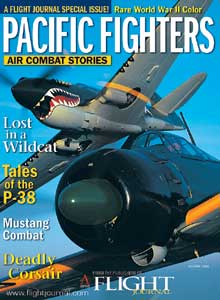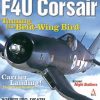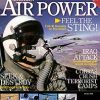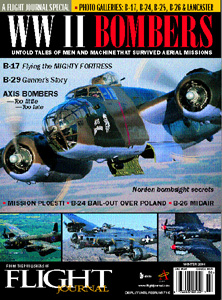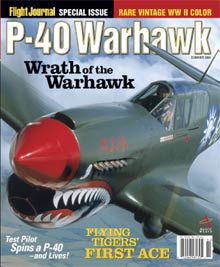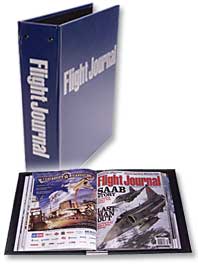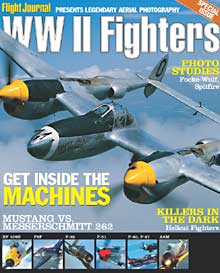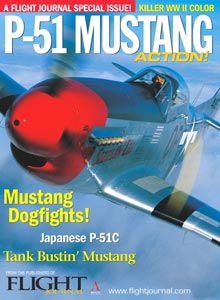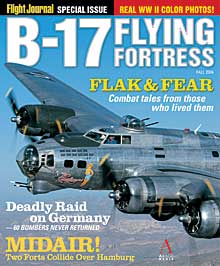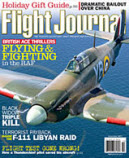Pacific Fighters 2003
$7.99
| Yellow Scorpions Mustang Combat Over China Warren Thompson The 530th Fighter Squadron, a.k.a. The Yellow Scorpions, was a thoroghbred P-51 Mustang wing operating in the Chinese theater. In this article, military aviation historian Warren E. Thompson recounts the exploits of these legendary pilots – named the Yellow Scorpians by Japanese radio propagandist “Tokyo Rose.” | |
P-38 Lightning Range, speed, a great gunnery platform – the Lightning had it all! Barrett Tillman Barrett Tillman gives an overview of the role played by the P-38 Lightning in the Pacific Theater. Includes the stories and first-hand testimonies of many top Lightning aces, information and statistics about each Lightning version, and a look at the important role played by Charles Lindbergh in improving its range. | |
Hellcat King of the Pacific Fighters Barrett Tillman More than any other aircraft, the Grumman F6F Hellcat is responsible for the defeat of Japanese air power in the Pacific. Hellcats are credited with shooting down more than 5,200 Japanese aircraft – 40% of the total number of shot down by all U.S. aircraft. Barrett Tillman gives a detailed look at Hellcat history, with a focus on its versatility – serving on carriers and land bases as a dive bomber, night fighter, drone and rocket platform. | |
Rising Sun’s Fighter Foes Japanese pilots list their toughest U.S. adversaries Henry Sakaida American fighter pilots in the Pacific war fought an enemy whose values and culture differed vastly from their own. Only during the last few years have the voices of the surviving Zero pilots begun to be heard. This article includes commentary from some of Japan’s best-known pilots, including Saburo Sakai, Ryoichi Yamada, Sadamu Nomachi and Takeo Tanimizu. | |
“”Didn’t We Tell You?”” A Wildcat pilot on patrol is forgotten Basil Mott Basil Mott launched in his Wildcat from a carrier one wet overcast morning in 1945, on an antisubmarine patrol that turned out to be anything but routine. Unbeknownst to Mott, the mission’s planners had forgotten to tell him about a change in course that required him to rendezvous with the carrier in a different location. In the pilot’s own words, here is the story of how he handled this dangerous situation. | |
F4U Corsair Adventures Memories of an F4U pilot Darrell Smith In this first-person account, Lt. Col. Darrell Smith, USMC, tells of his adventures while flying Marine Corsairs and Buffalos in the Pacific theater with “”Day’s Knights”” – VMF-312. | |
Saburo Sakai Japanese Ace Barrett Tillman Saburo Sakai was a survivor. One of Japan’s notable WW II fighter pilots, Sakai flew combat from 1937 to 1945 ad achieved exceptional success despite terrible injuries and impossible odds. Sakai was better known in the U.S. than in Japan, thanks to the English version of his memoir, “”Samurai.”” Sakai was the Imperial Navy’s third-ranking ace and Japan’s leading fighter pilot to survive the war. | |
Marion’s Shoes USMC ace Marion Carl is shot down and his shoes disappear John Bruning Marion Carl was the Marine Corps’ first ace, flying F4U Wildcats during the heavy fighting around Guadalcanal. John Bruning tells the story of the day Carl was shot down by Zeros and presumed dead by his squadron-mates. Though Carl had successfully bailed out and would eventually find his way back home, his shoes and other personal belogings had been diviied up. Carl recovered everything but the shoes, which had been taken by Commandant, Gen. David Shoup. Shoup kept the shoes throughout the war, insisting their luck was what had kept him alive. | |
The Final Kill WW II’s last victory as told by the P-61 pilot who made it Lee Kendall, Eric Schulenberger Maj. Lee Kendall tells the story of how his plane, Lady in the Dark, a P-61 night fighter, scored the final two victories of the war – just after the official ending of hostilities, but before word had gotten out to the Japanese. Many never-before-heard details of this event are brought to light. |

